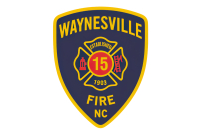Cliff swallows return
 That’s the news. Our common breeding swallows have always been purple martins, barn swallows, and northern rough-winged swallows. To a lesser extent, tree swallows also breed here, where there are suitable tree cavities or boxes. Cliff swallows are another matter.
That’s the news. Our common breeding swallows have always been purple martins, barn swallows, and northern rough-winged swallows. To a lesser extent, tree swallows also breed here, where there are suitable tree cavities or boxes. Cliff swallows are another matter.
Two years ago, Rick Pyeritz — the physician at UNC-A, whose first practice was in Bryson City — and I were leading an annual spring bird identification outing that we initiated 29 years ago this May. As usual, we started out the morning in Bryson City. We were observing the purple martins, barn, tree and rough-winged swallows over the Tuckaseigee River (between the two downtown bridges) when someone in the group remarked that the nests attached to the sides of the vertical supporting structures under the Everett Street Bridge were “funny looking.”
Tony Scardaci, an excellent birder who lives in Haywood County, was lugging a spotting scope. Sure enough, closer examination quickly revealed the characteristic jug-like nests of cliff swallows. At that point, we began to pick out the cliff swallows flying with the other swallows over the river. They displayed their characteristic snow-white foreheads, burnt-orange facial patterns, dark throats, and pale rumps. The white foreheads are especially prominent when the birds are sitting just inside their nests looking out.
I later counted 20 nesting jugs on the Everett Street Bridge (10 on each side) and about 20 on the upstream side of the Slope Street Bridge. There were none on the lower side of that bridge because of a pipe that blocked access. Some of the nests were isolated units, but many were clustered together in colonial units comprised of five or more jugs fused in a honeycombed pattern. Beautifully crafted, they are the work of skilled avian potters. This year’s cliff swallows are just getting started but will have completed some impressive nest building within a week to ten days. “The Birds of America Online” (an Internet subscription site sponsored by the Cornell Lab of Ornithology and the American Ornithologists’ Union) describes the nest sites as follows:
“The Cliff Swallow is one of the most social land birds of North America. These birds typically nest in large colonies, and a single site may contain up to 3,500 active nests ... New colonies continue to appear each year in areas where Cliff Swallows were previously unrecorded as breeders. Both sexes build the nest, although the male may initiate construction before he attracts a mate. Birds gather mud in their bills along the bank of a stream, lake, or temporary puddle (e.g., ruts in road) … Birds bring a mud pellet back to a colony and mold it into the nest with a shaking motion of bill. A newly built nest begins as a narrow mud ledge affixed to wall … Birds add to the ledge until it is a crescent shape projecting outward … then extend lateral and ventral walls upward to form a broad half-cup … A roof is added by doming over the sides, creating an entrance tunnel pointing downward … Birds gather mud in large synchronized groups [but will] steal wet mud from unattended neighboring nests. Nests retain heat and are warmer than outside temperatures at night and in early morning. They offer greatest advantage in preventing radiative heat loss at night.”
Related Items
Swallows are the ballet dancers of the bird world. They bring flying to another level. We never tire of watching the patterns — intricate, endless, ever changing, and yet somehow the same — they etch against the sky. Accordingly, it’s exciting news for area birders that cliff swallows, a species relatively new to Western North Carolina, are now breeding here in appreciable numbers and can be readily observed both flying and crafting their unique nests.
George Ellison wrote the biographical introductions for the reissues of two Appalachian classics: Horace Kephart’s Our Southern Highlanders and James Mooney’s History, Myths, and Sacred Formulas of the Cherokees. In June 2005, a selection of his Back Then columns was published by The History Press in Charleston as Mountain Passages: Natural and Cultural History of Western North Carolina and the Great Smoky Mountains. Readers can contact him at P.O. Box 1262, Bryson City, N.C., 28713, or at This email address is being protected from spambots. You need JavaScript enabled to view it..









